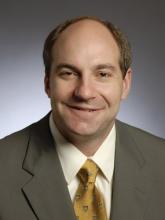In areas where video electroencephalography is not available, clinicians can use a staged approach to diagnosing psychogenic nonepileptic seizures, incorporating medical histories, eyewitness accounts, and video recordings of seizure activity, an international study group has found.
Most patients with recurrent seizures are presumed to have epilepsy and are treated with antiepileptic drugs (AEDs), but AEDs do not treat psychogenic nonepileptic seizures (PNES) and could exacerbate them. Therefore, early and accurate recognition of PNES is "of paramount importance," according to an International League Against Epilepsy task force led by Dr. W. Curt LaFrance Jr. of Rhode Island Hospital and Brown University, Providence. It noted, however, that the matter is complicated by the fact that epilepsy is a recognized risk factor for the development of PNES.
The task force’s report aims "to provide greater clarity about the process and certainty of the diagnosis of PNES, with the intent to improve the care for people with epilepsy and nonepileptic seizures," the authors wrote. "The ability to diagnose PNES when vEEG is not available may open opportunities to lower and middle income countries where monitoring is not available."
The authors reviewed the medical literature to evaluate approaches to diagnosing PNES, including taking a history; electroencephalogram (EEG); ambulatory EEG; video EEG/monitoring; neurophysiologic, neurohumoral, neuroimaging, and neuropsychological testing; hypnosis; and conversation analysis (Epilepsia 2013 Sept. 20 [doi:10.1111/epi.12356]).
The combination of video EEG, along with history taken from patients and witnesses, offers the diagnostic standard, "however, vEEG is not available in some locations, and in some patients, events cannot be recorded," the authors said.
The group suggested four categories of certainty for PNES diagnosis, and what clinicians would need:
• Documented PNES relies on clinical history plus a vEEG recording of habitual events.
• Clinically established PNES is defined by a clinical history, clinician witness, plus ambulatory EEG recording of habitual event(s) without video. This would be appropriate if a clinician witness observed a seizure and documented the exam findings typically found in PNES, like resisted eye-opening, or if a clinician could review a non-EEG event by video or in person.
• Probable PNES is determined by a clinical history, a clinician review of video recording or live events, and a normal interictal EEG. This would be appropriate if a clinician could review a home or cell phone video recording of seizure activity or witness it live.
• Possible PNES relies on clinical history from the patient and/or witness and a normal interictal EEG. At minimum, a patient’s history and description of events and an eyewitness description could help identify possible PNES, but without the clinician "observing the ictus on video or in person, an alternative diagnosis of epilepsy would have to be considered very carefully."
The authors reported no conflicts of interest.


